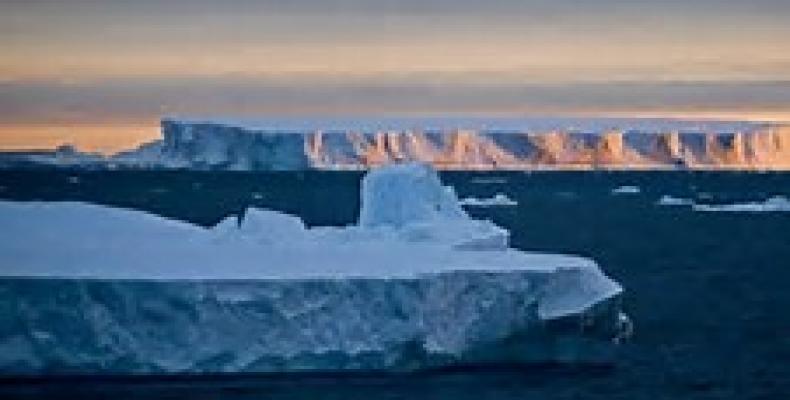Hobart, October 20 (RHC)-- The Antarctic Ocean Alliance (AOA) called on the 25 member countries on Monday gathering for the annual meeting of the Commission for the Conservation of Antarctic Marine Living Resources (CCAMLR) meeting from October 19 to the 30th to finally agree on lasting and significant Southern Ocean protection.
CCAMLR previously pledged to establish two marine protected areas by 2012, but, because of a lack of consensus, member states have failed to reach agreement on two major proposals on four separate occasions. The Southern Ocean is home to more than 10,000 unique species, including most of the world’s penguins, whales, seabirds, and colossal squid, as well as the commercially targeted Antarctic toothfish, known in many retail outlets as Chilean sea bass.
Since they were introduced, both proposals have undergone a number of iterations, and several significant compromises have been negotiated among CCAMLR members, including reduction in the size of the protected areas. The international nongovernmental organizations that make up AOA are calling for the immediate designation of both proposals rather than risk any further erosion.
A joint proposal of the United States and New Zealand to designate a Ross Sea marine protected area (MPA) of 1.25 million square kilometers —with 1.14 million square kilometers proposed as “no take”—has been under consideration since 2011. The Ross Sea, one of the most pristine oceans remaining on Earth, is often referred to as “the Last Ocean.”
Likewise, Australia, France and the EU are once again proposing the creation of an MPA to protect 946,998 square kilometers of East Antarctic waters that has been under consideration since 2010. This proposal would allow exploratory and research activities within the MPA if they are consistent with its objectives. The region’s unique oceanographic and seafloor features coupled with its biological value to seabirds, seals, and other animals, make the East Antarctic coastal region a prime area for protection.
The two-week CCAMLR meeting precedes December’s 21st Session of the Conference of the Parties to the United Nations Framework Convention on Climate Change (COP21). COP21 will be a crucial conference, as it needs to achieve a new international agreement on the climate, applicable to all countries, with the aim of keeping global warming to less than 2 degrees Celsius. AOA believes the role of the oceans in attaining this goal cannot be ignored.
The Antarctic Ocean Alliance partners are attending the CCAMLR meeting in Hobart, where they will work to ensure that delegates step up to the challenge and designate the Ross Sea and East Antarctica proposals.
Fully protected marine reserves are areas that are off-limits to all extractive uses, including fishing. They provide the highest level of protection to all elements of the ocean ecosystem.
Marine protected areas (MPAs) are areas where certain activities are limited or prohibited to meet specific conservation, habitat protection, or fisheries management objectives.
Consensus-based decision-making does not mean that everyone must agree, but that no one can voice disagreement, which means that one member state can effectively stop a measure from going forward.


